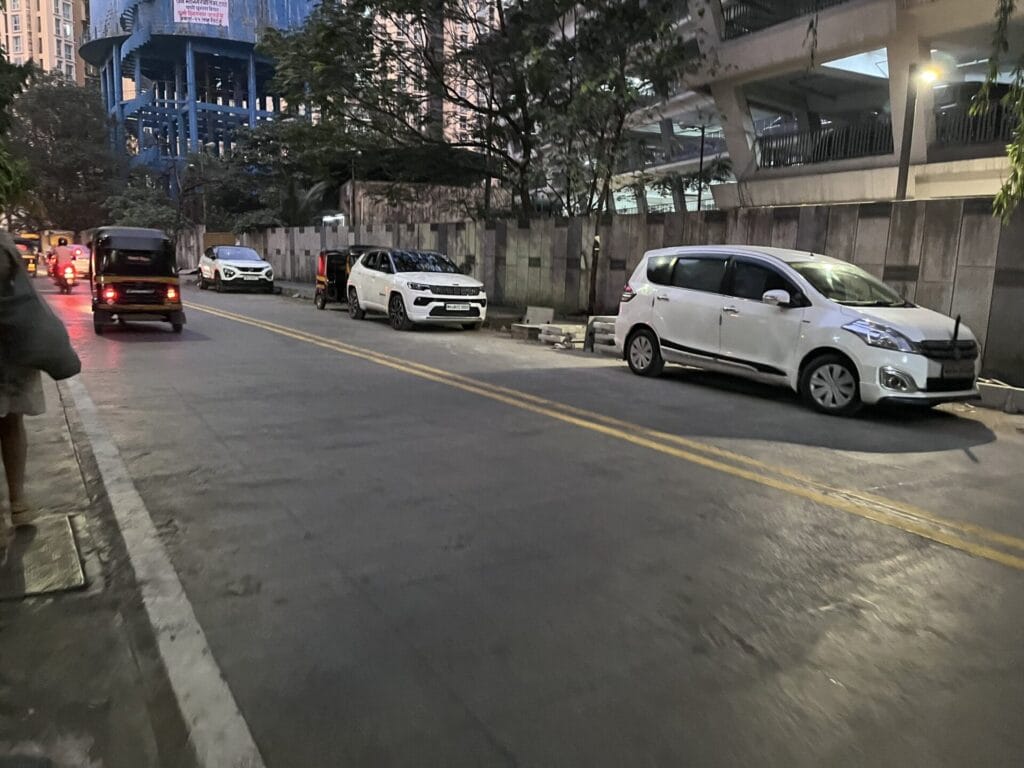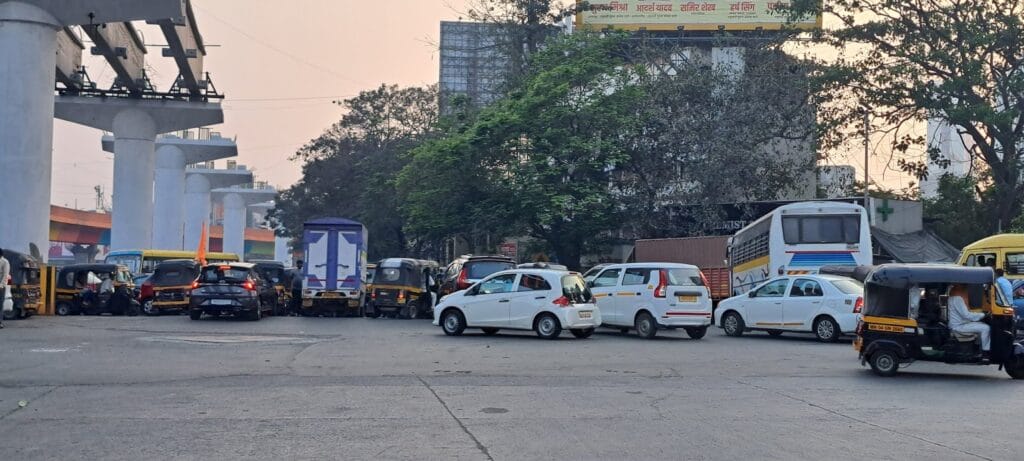“I say no to passengers who want to go to Viviana Mall because of the service road traffic, ” says Manik Patil, an auto rickshaw driver who drives from Kapurbawdi to Majiwada in Thane. The service road in question is a 1.3 km road that starts from Cadbury junction to Majiwada Naka Pokhran Road 2, near Thane’s biggest mall – Viviana Mall. Given its location, the road often ends up being a hub of traffic jams.
A local resident Avinash Tripathi says, “Just a few days ago, it took me around half an hour to cross 500 metres on the Viviana Mall service road due to pathetic traffic conditions.” Some of the reasons for the extreme congestion could be unchecked urban planning and development, as well as negligence from the Thane Municipal Corporation.
The service road also known as Shahid Mangal Pandey Road is crucial to those living in the residential complexes that border the road. The area is also home to a number of commercial properties like the mall, several office clusters, and tech parks. There are also a few hotels and a school nearby.
Read more: Walkability: Endless roadblocks force Bandra residents to map their own roads
Interestingly, the area used to be mostly industrial land owned by Voltas, a home appliance company. After Voltas divested their land to private developers, such as Sheth Developers and Lodha, the developers constructed a mall, hospital, commercial IT Parks and residential complexes. Over time, it led to a concentration of commuters and traffic in the area.
Traffic jams are often caused by a multitude of factors that overcrowd roads in such a way that movement is heavily inhibited. Narrow roads, high population densities, a lack of pedestrian walkways, makeshift parking on road areas, and a faulty diversion from Pokhran Road traffic to the service road, could be some of the reasons why the traffic around Viviana mall is almost impenetrable. A lack of space for free movement appears to be the underlying factor.
However, we need to understand how poor urban planning and unchecked infrastructure building play a role in reducing the available road space.
Dense population and narrow roads
Since the area is densely populated and has a popular mall and hospital, the service road is perpetually in a state of ‘rush hour.’ People from all parts of Thane come here. For example, the employees of the companies, who have their offices in Lodha IThink or TCS Yantra Park drive their vehicles through this service road towards their office, parents also drive their children to Horizon School from this road, patients and their relatives who visit Jupiter Hospital use this road as well.

Those who stay in the residential complexes in this area use this service road to go towards their Mumbai or Navi Mumbai workplaces. In the evening hours, when the work-time and school afternoon shifts get over, the road is inevitably jammed.
No space for pedestrians
The entire stretch of service road also does not have a wide walkable footpath for pedestrians. At the spots where a footpath is visible, hawkers carry out their business. they have no other space nearby. Because of this pedestrians have to walk on the road, endangering their lives as well as reducing the width of an already narrow road for vehicular traffic.
Parking on service road
Even though both Viviana Mall and Jupiter hospital have substantial parking spaces available in their premises, often car owners and bike owners park on the service road due to long parking queues.

Raghav Sen, a frequent visitor to Viviana Mall says, “It takes around an hour to reach the parking lot to park my vehicle due to longer queues. Many people instead of waiting for their turn to park in the Mall’s parking lot, park their cars on the service road to save time as well as the parking charges.”
Read more: Concretising Mumbai roads: How design can help create better road infrastructure
In addition, once the Cadbury Metro Station and Majiwada Metro Station start their operations in a few years, there is a chance that auto rickshaws will pile up on this narrow road, increasing the traffic jams in the vicinity.
Many motorists on the way to the hospital mention that the building doesn’t have enough space to accommodate parking two wheelers, pushing many two wheeler owners to park their vehicles on the service road.
A few years ago, the Thane Municipal Corporation even constructed a parking lot next to Viviana Mall, however the parking on the service road still remains an issue.
Impact of Pokhran road diversion on service road
Another factor that contributes to the traffic is the influx of vehicles from the 40-metre wide Pokhran Road Number 2. A diversion from Pokhran road flows directly into the 15-meter narrow service road, adding a huge amount of traffic.

The Traffic from Pokhran Road 2 comes from areas from North East Mumbai such as Subhash Nagar, Vasant Vihar, Hiranandani Meadows, and Upvan Lake. The traffic from here merges into a narrow service road due to an unplanned traffic junction at Majiwada.
Possible solutions
One of the ways the traffic could be reduced is by making the road a one way from Cadbury to Majiwada as it is too narrow a road for two way traffic. Additionally, widening the service road to maximum width would allow for more space. An underground road, to reduce the load on the service road could also help in this situation. Finally, it is imperative that the entry of vehicles from Pokhran Road 2 to Viviana Mall is stopped, to prevent excess and unexpected influx of vehicles.
Read more: Explainer: How to control traffic flow to make our streets congestion-free
These are some solutions to the problem, but traffic jams need to be analysed as a product of poor planning and a lack of consideration for commuter needs and patterns. Apart from this service road, Thane is home to a number of narrow roads, where traffic jams are quite common.
As more townships start to sprout and the city expands, if proper planning and space are not provided for those who might live and work here, there is a risk of repeating the same mishandling of traffic as is the case at Viviana Mall service road.
(Writing assistance provided by Savitha Ganesh.)
| In order to register complaints and share your analysis on any traffic jams, you can reach out to the Mumbai Traffic Police twitter account: @MTPHereToHelp. You can also tweet to @RoadsOfMumbai – a popular X (Twitter) account, which documents citizen observations and problems with commute and roads around the city, as well as my own account @QueenofThane. |